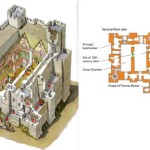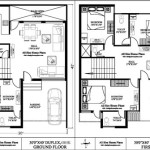Manchester Opera House Seating Plan: A Comprehensive Guide
The Manchester Opera House, a renowned venue for theatrical performances, concerts, and other live events, presents a diverse range of seating options catering to varied preferences and budgets. Understanding the seating plan view is crucial for patrons aiming to secure optimal viewing experiences. This article provides a detailed overview of the Manchester Opera House seating plan, outlining key sections, factors influencing seat selection, and general advice to enhance the overall experience.
The Manchester Opera House seating plan typically comprises several distinct tiers: the Stalls (also known as the Orchestra), the Grand Tier, the Circle, and the Upper Circle. Each level offers a unique perspective on the stage, with varying degrees of proximity and elevation. Furthermore, the presence of boxes along the sides of certain tiers contributes to the diversity of choices available to theatregoers.
The Stalls, situated at stage level, generally provide the closest and most immersive experience. The Grand Tier, located immediately above the Stalls, offers an elevated vantage point with a broader view of the stage. The Circle, positioned above the Grand Tier, presents a more distant, yet still comprehensive, view. The Upper Circle, the highest tier, provides the most economical seating options, albeit with a greater distance from the stage.
Navigating the Manchester Opera House seating plan and making informed decisions requires careful consideration of several factors. These include proximity to the stage, viewing angles, potential obstructions, legroom, and budget constraints. Patrons are encouraged to consult the venue’s official seating plan, paying close attention to the layout and seat numbering system.
Key Considerations in Choosing Seats
Several factors influence the perceived quality and enjoyment derived from a seat at the Manchester Opera House. These factors can be broadly categorized into proximity to the stage, viewing angle, and potential obstructions. Each of these elements is discussed in further detail below.
Proximity to the Stage: The closer a seat is to the stage, the more detailed the view of the performers and the stage design. This is particularly important for productions where nuanced facial expressions and intricate costumes play a significant role. However, extremely close seats in the Stalls may occasionally necessitate craning the neck upwards, potentially leading to discomfort during longer performances. Seats further back in the Stalls offer a more panoramic view of the stage, encompassing the entirety of the set design.
Viewing Angle: Seats located directly in the center of each tier typically offer the most unobstructed and balanced viewing angle. These seats provide a symmetrical perspective of the stage and minimize any distortion caused by viewing from an angle. Seats located further to the sides may offer a slightly skewed perspective, which can be less desirable for some patrons. It's important to note that the degree of distortion varies depending on the specific production and the stage configuration.
Potential Obstructions: Certain seats may have partially obstructed views due to the presence of pillars, safety railings, or other architectural features. The Manchester Opera House seating plan typically indicates the presence of any such obstructions, allowing patrons to avoid these seats when making their selections. However, it is always advisable to confirm the specifics of any potential obstructions with the box office before finalizing a purchase.
Understanding the Different Tiers
The Manchester Opera House is structured with different tiers, each offering a distinct experience. Choosing the right tier depends on budget, desired proximity, and viewing preference. A comprehensive understanding of each tier is vital for optimal seat selection.
The Stalls (Orchestra): The Stalls, often regarded as the premium seating area, provide the closest proximity to the stage. Seats in the front rows offer unparalleled intimacy with the performers. However, as mentioned earlier, these seats may require looking upwards, which can be tiring during extended performances. Seats further back in the Stalls offer a more balanced view of the entire stage. Generally, the central section of the Stalls is considered the most desirable, offering a comprehensive and unobstructed view.
The Grand Tier: Situated directly above the Stalls, the Grand Tier provides an elevated perspective. This tier offers a wider view of the stage, encompassing a larger portion of the set design and allowing patrons to appreciate the overall visual spectacle of the production. The central seats in the Grand Tier are often considered to offer excellent value, providing a good balance between proximity and viewing angle. Seats towards the front of the Grand Tier provide a more intimate experience, while those further back offer a more panoramic view.
The Circle: Located above the Grand Tier, the Circle offers a more distant view of the stage. While the performers may appear smaller from this vantage point, the Circle still provides a comprehensive view of the entire production. This tier generally offers more affordable seating options, making it an attractive choice for budget-conscious theatregoers. The central seats in the Circle are typically preferred, as they offer a balanced and unobstructed view.
The Upper Circle: The Upper Circle represents the highest tier in the Manchester Opera House. It offers the most economical seating options, albeit with the greatest distance from the stage. While the performers may appear small from this vantage point, the Upper Circle still provides a decent overview of the production. The central seats in the Upper Circle are generally recommended, as they offer the best possible view from this tier. Patrons should be aware that the Upper Circle may have steeper seating angles, which could be a factor for those with mobility issues.
Tips for Enhancing Your Experience
Beyond understanding the seating plan, several ancillary factors can contribute to an enhanced experience at the Manchester Opera House. These include booking tickets in advance, arriving early, understanding seating restrictions, and considering accessibility requirements.
Booking Tickets in Advance: Securing tickets well in advance of the performance date is highly recommended, particularly for popular productions. Early booking allows patrons to choose from a wider selection of seats and increase the likelihood of securing their preferred locations. Many ticketing platforms offer interactive seating plans, allowing patrons to visualize the view from different seats before making a purchase.
Arriving Early: Arriving at the Manchester Opera House well before the scheduled performance time allows patrons to navigate the venue calmly, locate their seats without rushing, and enjoy the ambiance of the theatre. Early arrival also provides an opportunity to peruse the program, purchase refreshments, and visit the restrooms without having to contend with crowds.
Understanding Seating Restrictions: Some seating areas may have restrictions, such as limited legroom or restricted recline angles. It is essential to be aware of any such restrictions before booking tickets, particularly for patrons who require additional space or have mobility issues. The Manchester Opera House website or box office should be able to provide detailed information regarding any seating restrictions.
Considering Accessibility Requirements: The Manchester Opera House is committed to providing accessibility for all patrons. Patrons with mobility issues, visual impairments, or other disabilities should contact the box office in advance to discuss their specific needs and ensure appropriate seating arrangements. The venue offers wheelchair-accessible seating, as well as assisted listening devices and other accommodations.
In conclusion, a thorough understanding of the Manchester Opera House seating plan, combined with careful consideration of personal preferences and needs, is paramount for securing an optimal viewing experience. By considering factors such as proximity to the stage, viewing angle, potential obstructions, and budget constraints, patrons can make informed decisions and maximize their enjoyment of the performance.

Manchester Opera House Seating Plan

Opera House Manchester Gallery View From Seat Seatplan

Opera House Manchester Seating Plan Seat View Photos Seatplan

Opera House Manchester Events Tickets 2024 Seatplan

Opera House Manchester Events Tickets 2024 Seatplan

Manchester Palace Theatre And Opera House Everything You Need To Know Evening News

Opera House Manchester Gallery View From Seat Seatplan

Opera House Manchester Events Tickets 2024 Seatplan

Manchester Opera House Section Stalls Page 1

Opera House Manchester Gallery View From Seat Seatplan








